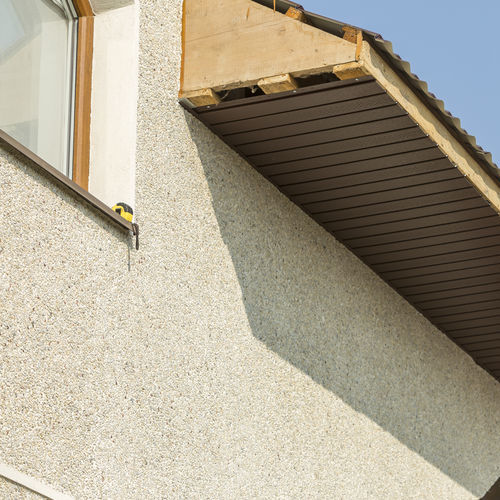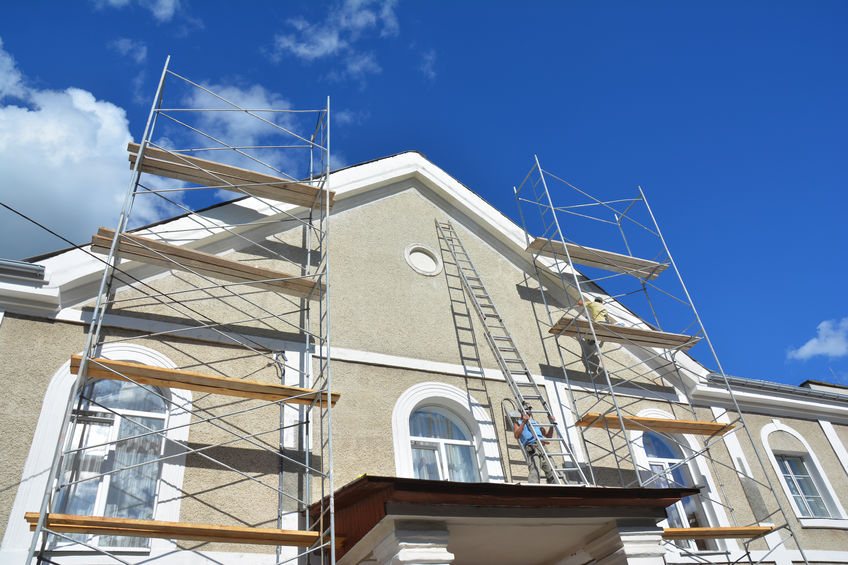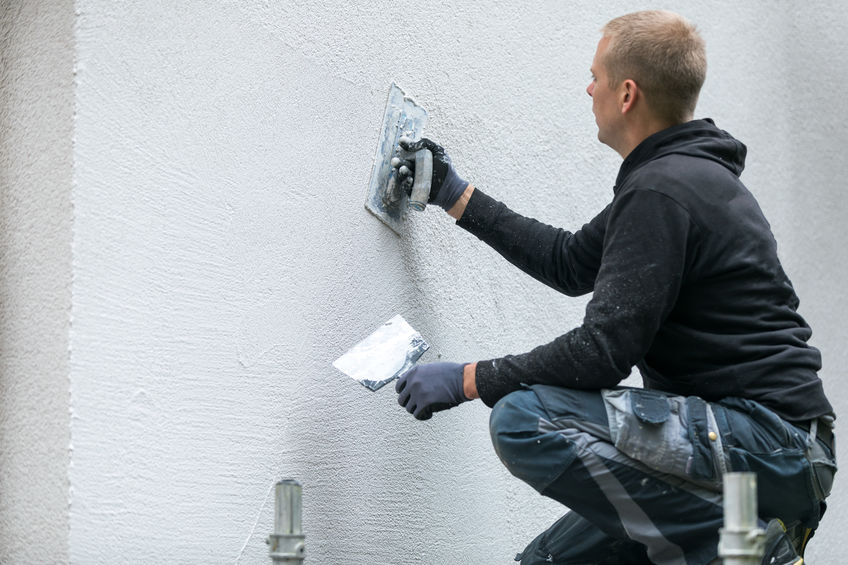
Quality Exterior Solutions
What is stucco? Stucco is a popular exterior siding for houses in many parts of the country, typically the Southwest, but it is found in other parts of the country today. The combination of lime, Portland Cement, sand, and water makes an acrylic-polymer finish that contracts and expands with the temperature. Because it goes with the temperature, the need for stucco repair is minimal, although sometimes still necessary. It is the occasional need for stucco repair that we are going to discuss here.
How long does stucco last?
There is an acrylic-polymer finish on most exterior stucco sidings. It contracts and expands with the weather, which is one reason it is a popular choice among homeowners. There are minimal cracks, it has a lifespan of fifty years or longer, and when it does crack, stucco repairs are easy.
Because of the application of stucco, and the material it is made from, it is an excellent insulator of both cold and warm air. A stucco exterior is comfortable and inexpensively maintain, keeps the temperature constant inside your home regardless of the outdoor temperature, making in a tremendous energy-efficient material for homes everywhere. These are the reasons why you’ll find stucco in regions where the summer temperatures are extreme, like in the Southwest.
From the design perspective, stucco has a finish that is hard to beat because the southwest look is popular today, for exterior and interior everywhere. A smooth and traditional look, stucco can be made to match any color by adding color to cement coats as it is being applied to the house. Many homes have artistic designs carved in exterior coatings or mosaics and murals to give a home a unique look. With these features and the ease of stucco repair when it does have cracks, it explains the popularity of this material.

Is it normal for stucco to crack?
It can be considered as a combination of a good thing and a bad thing, stucco cracks. While stucco repair is easy to do, most people that have a home with stucco siding know that cracks are common and a way of life that you accept.
However, it is helpful to understand how stucco cracks come about, the different type of cracks, and when stucco repair is necessary:
The Types of Cracks
Different factors cause various types of stucco cracks. The following will help you identify the signs of stucco damage your home may have:
- Hairline Crack: A very thin crack that is approximately one-sixteenth of an inch or smaller and is the most common stucco crack, especially is newer homes. This crack is from settling and shifting after or during construction.
- Foam Trim Crack: Stucco has a foam trim, which can crack sometimes, and usually indicates that fiberglass mesh tape was not used during the foam trim installation. So, when the stucco contracts and expands, the foam trim allows the stucco around those areas to crack.
- Spider Crack: As the name indicates, this stucco cracking resembles a spider web. This type of crack indicates the stucco wasn’t adequately cured usually because it had too much water in the mixture, the stucco dried too fast, or it was applied in a temperature setting that wasn’t stucco friendly.
- Pattern Crack: You may notice pattern cracking on your stucco walls, something of a horizontal, vertical pattern cracking. This type of cracking indicates the lath was installed incorrectly and isn’t nailed on to the wood frame properly. You will continue to have pattern cracking because there is no fix for this other than multiple stucco repair jobs. Fortunately, these cracks and repair go with the stucco appearance.
- Diagonal Crack A diagonal crack is found around the doors and windows and are caused by seismic foundation changes and shifting. You should perform stucco repair on the wider cracks immediately
How do you repair stucco?
You may be surprised at the ease of stucco repair how to be using the following methodology for stucco repair options. The type of crack will make a difference in how much work is needed. For example, a hairline crack stucco repair is a matter of filling it in to prevent the crack spreading more. Many different products on the market can be used for this type of stucco repair. However, a diagonal crack or patterned crack stucco repair often requires more work or call in experts for a professional stucco repair job.
To do your stucco repair job, follow these steps:
- Use an acrylic caulk for filling gaps.
- Widen the crack to a quarter of an inch width.
- Clean the crack with a wire brush to remove any debris.
- Using a caulk gun and the mixture of acrylic caulk, fill in the crack
- Allow the caulk a 24 hour cure period.
- Use water-based paint to cover the stucco repair job.
How do you fix crumbling stucco?
When you notice a sizable patch of stucco is bulging, crumbling, or loose, this doesn’t mean your house is falling apart. This is a type of stucco repair that you can do yourself by cleaning the crumbling, defective material, and expose the lath underneath.
If the lath is rusted, remove it, and any torn building paper underneath the lath. You’ll replace that with new paper nailed on top of the wood sheathing. Use large head galvanized nails or rust-resistant staples. Next, cut a section of metal lath that will fit the area that needs repair and affix it with galvanized nails so that there isn’t a reaction with the cement.
Either holding the lath out or use two-headed nails to create a quarter-inch of space between the lath and paper 10 to 12 inches from each other.
Now, create a mixture of mortar cement, sand, and water to create a doable mix that isn’t too thick or to thin, a pliable consistency that trowels easily and holds its shape when piled on without sagging. You don’t want it too dry and stiff, or it will crumble again.
Apply the first coat by troweling it on top of the wire mesh so that it is completely embedded and bring the stucco on a piece of metal or wood to the area the stucco repair is being done. Using a trowel, scoop up a good amount and starting at the bottom, apply with a pressure that will force the mortar into the mesh openings. Keep building this coat up until it is ½ inch thick, and the lath is covered.
After it has reached a set texture, crisscross stroke the surface with a scrap metal piece that has ragged edges. As this coat dries over the new few days, spray a fine mist over it to get proper curing. Then wet the surface and apply the second coat in the same process as described above. This will need to set up to 7 days, still keeping it moist for the first three days. Now apply the final coat by troweling on ta smooth surface that is marginally higher than the surrounding area and let it become stiff before putting a texture on the stucco.
How do you know if your stucco is bad?
If you notice any of the following things on your stucco cover, call a professional to inspect and advise you what should be done:
- Heavy stains
- Thin cracking
- Long cracking
- Stucco wall finish bulges
- Stucco missing

Closing Words
The great thing about stucco is that almost anyone can do stucco repair and installation! With a little researching and studying, thanks to the internet, stucco is one siding material that any DIY homeowner can do their stucco repair and install on any structure.
